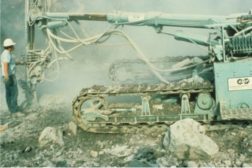Home » Keywords: » silica PELs
Items Tagged with 'silica PELs'
ARTICLES
Public hearings on OSHA’s silica proposal get underway
Dozens of associations and experts scheduled to speak
March 20, 2014
ASSE submits comment on OSHA's proposed silica rule
Rule "probably not entirely technologically feasible" for all employers
February 3, 2014
Review calls for increased attention to cancer risk from silica
Action could help millions exposed to silica at work
December 13, 2013
Become a Leader in Safety Culture
Build your knowledge with ISHN, covering key safety, health and industrial hygiene news, products, and trends.
JOIN TODAYCopyright ©2024. All Rights Reserved BNP Media.
Design, CMS, Hosting & Web Development :: ePublishing



